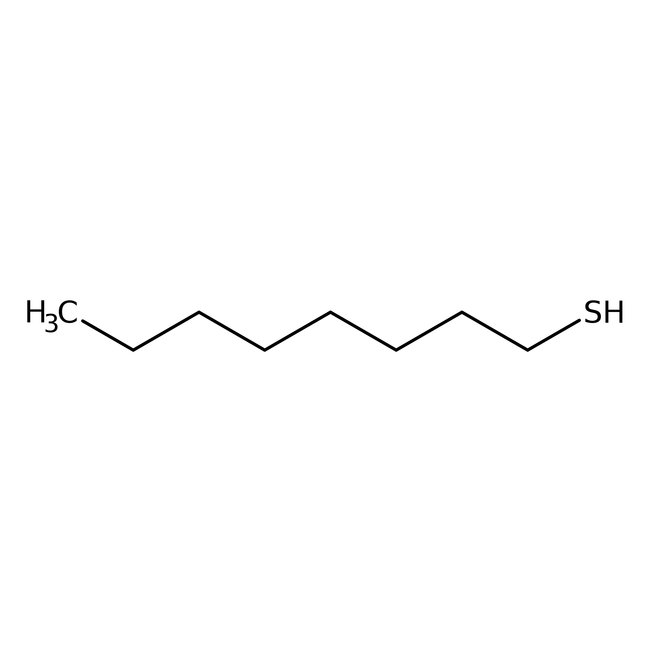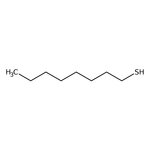Search Thermo Fisher Scientific
Thermo Scientific Chemicals
1-Octanethiol, 98%
CAS: 111-88-6 | C8H18S | 146.29 g/mol
Catalog number ALFL07195.AP
View Price:Sign InSign in to see your account pricing. Need an account? Register with us today.
Quantity:
500 mL
Specifications
Chemical Name or Material1-Octanethiol
CAS111-88-6
Health Hazard 1H227-H315-H317-H319
Health Hazard 2GHS H Statement
H332-H317-H227
Harmful if inhaled.
May cause an allergic skin reaction.
Combustible liquid.
H332-H317-H227
Harmful if inhaled.
May cause an allergic skin reaction.
Combustible liquid.
Health Hazard 3P210-P235-P261-P264b-P271-P272-P280-P302+P352-P304+P340-P305+P351+P338-P312-P333+P313-P362-P370+P378q-P501c
View more
1-Octanethiol can be used to improve charge injection by creating a monolayer of this material on gold source-drain electrode surfaces for bottom-contact thin-film transistors (TFTs).
This Thermo Scientific Chemicals brand product was originally part of the Alfa Aesar product portfolio. Some documentation and label information may refer to the legacy brand. The original Alfa Aesar product / item code or SKU reference has not changed as a part of the brand transition to Thermo Scientific Chemicals.
Applications
1-Octanethiol can be used to improve charge injection by creating a monolayer of this material on gold source-drain electrode surfaces for bottom-contact thin-film transistors (TFTs).
Solubility
Not miscible in water.
Notes
Stable under recommended storage conditions. Incompatible with oxidizing agents.
1-Octanethiol can be used to improve charge injection by creating a monolayer of this material on gold source-drain electrode surfaces for bottom-contact thin-film transistors (TFTs).
Solubility
Not miscible in water.
Notes
Stable under recommended storage conditions. Incompatible with oxidizing agents.
RUO – Research Use Only
General References:
- Qin Jia Cai; Mary B.Chan-Park; Zhi Song Lu; Chang Ming Li; Beng S.Ong. Bottom-contact poly(3,3‴-didodecylquaterthiophene) thin-film transistors with gold source-drain electrodes modified by alkanethiol monolayers. Langmuir. 2008, 24,(20), 11889-11894.
- Anne Kathrena A.Aliganga; Anne-Sophie Duwez; Silvia Mittler. Binary mixtures of self-assembled monolayers of 1,8-octanedithiol and 1-octanethiol for a controlled growth of gold nanoparticles. Organic Electronics. 2006, 7,(5), 337-350.



